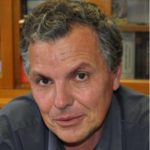Link to Pubmed [PMID] – 20950222
Med. Mycol. 2011 Apr;49(3):329-32
Identification of the etiologic agent responsible for sinus fungal ball (SFB) is rarely obtained due to either the culture of patient specimens not being ordered or if cultures were inoculated they proved to be negative. Obviously, this has a significant impact on the design of appropriate therapeutic strategies. We investigated whether paraffin-embedded (PE) tissues, the only materials often available, were suitable for the correct identification of the responsible fungi. We obtained PE tissues of SFB from 16 different patients who had risk factors for invasive fungal infections. DNA was extracted using an automated extractor and the internal transcribed spacer (ITS) sequenced following amplification with two sets of primers designed to amplify >300 bp fragments. This was attempted in parallel with a real-time quantitative PCR assay targeting Aspergillus spp. mitochondrial DNA designed to amplify <150 bp fragments. ITS sequencing succeeded in appropriately identifying the etiologic agents in 10 of the 16 samples (nine Aspergillus fumigatus, one Lewia spp.). In contrast, the <150 bp PCR assay amplified all specimens correctly except the one involving Lewia spp. If fungal identification is warranted to understand the pathophysiology of SFB and guide clinicians, we cannot rely only on ITS sequencing of the DNA obtained from PE tissues. The main reason is probably due to the fact that formalin prevents amplification of long DNA fragments and consequently, frozen or fresh tissues should be employed.

